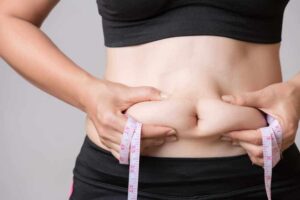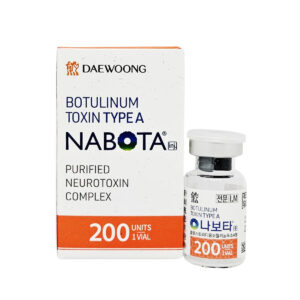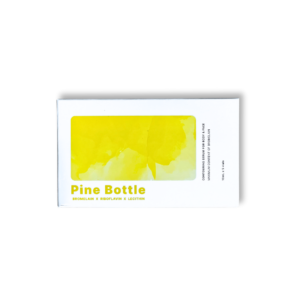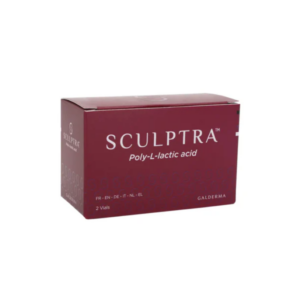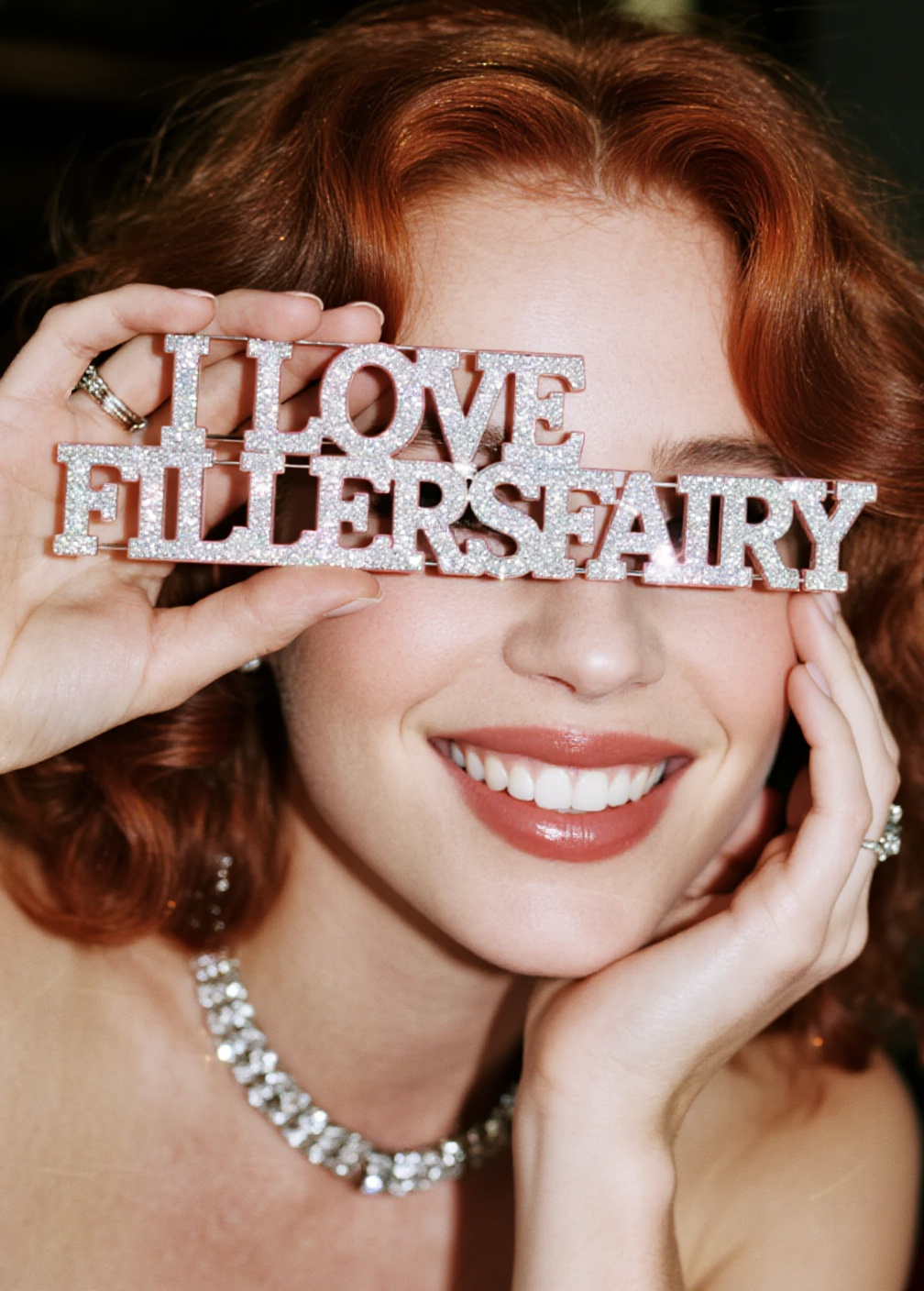No products in the cart.
Need help? Write to us support@fillersfairy.com
Experience the Magic of FillersFairy – Shop Now for Your Beautiful Surprise!
- DERMAL FILLER
- BODY FILLER
- SKIN BOOSTER
- NCTF 135HA
- DIVA EYE PN
- DIVA FACE PN
- AMI NAD+
- NadReju
- Miracle Touch BR
- Miracle Touch Up
- Regenovue Aqua Shine Plus
- Vitaran i
- Vitaran i 2
- Hyalace
- Elaxen PN
- PuriColl
- Rejeunesse Sparkle
- ASCE+ IRLV
- AestheFill
- AETER PURI EYES
- Ami Eyes
- Aqua Exosome
- ASCE Plus SRLV
- Celosome Aqua
- Curenex Glow
- Cytocare
- Exo-one
- High Inj
- Hyaron
- Juvederm Skinvive
- Kiara Reju
- Lapuroon
- Miracle
- Puri Hilo PN
- Puri Pdrn
- Purilips
- Rejuran
- Revitrane HA20
- Richesse Collafio
- Save B32
- Save B32SP
- BOTULINUM TOXIN
- FAT DISSOLVING
- HAIR TREATMENT
- IV THERAPY
- NUMBING CREAM
- PLLA/PCL/CA+
- CONSUMABLES
- THREAD
- AESTHETIC COSMETICS
- PEELING
Сall our consultants or Chat Online
+1(912)5047648
- DERMAL FILLER
- BODY FILLER
- SKIN BOOSTER
- NCTF 135HA
- DIVA EYE PN
- DIVA FACE PN
- AMI NAD+
- NadReju
- Miracle Touch BR
- Miracle Touch Up
- Regenovue Aqua Shine Plus
- Vitaran i
- Vitaran i 2
- Hyalace
- Elaxen PN
- PuriColl
- Rejeunesse Sparkle
- ASCE+ IRLV
- AestheFill
- AETER PURI EYES
- Ami Eyes
- Aqua Exosome
- ASCE Plus SRLV
- Celosome Aqua
- Curenex Glow
- Cytocare
- Exo-one
- High Inj
- Hyaron
- Juvederm Skinvive
- Kiara Reju
- Lapuroon
- Miracle
- Puri Hilo PN
- Puri Pdrn
- Purilips
- Rejuran
- Revitrane HA20
- Richesse Collafio
- Save B32
- Save B32SP
- BOTULINUM TOXIN
- FAT DISSOLVING
- HAIR TREATMENT
- IV THERAPY
- NUMBING CREAM
- PLLA/PCL/CA+
- CONSUMABLES
- THREAD
- AESTHETIC COSMETICS
- PEELING
Juvelook (PLLA-based) stimulates collagen over months, ideal for gradual volume restoration, while Rejuran (PN-based) promotes faster healing via polynucleotides.
Juvelook requires 3 sessions spaced 4-6 weeks apart, whereas Rejuran shows visible improvement in 2-4 weeks. Both enhance skin elasticity, but Juvelook suits deeper wrinkles, and Rejuran excels in hydration and texture.
Table of Contents
ToggleCost Comparison
When choosing between Juvelook and Rejuran for skin rejuvenation, cost is a major factor. Juvelook, a polycaprolactone (PCL)-based filler, typically ranges from 800to1,200 per syringe, while Rejuran, a polynucleotide (PN) treatment, costs 600to1,000 per vial. However, Juvelook lasts 12-18 months, whereas Rejuran requires 3-4 sessions (every 4 weeks) for optimal results, bringing the total cost to 1,800–4,000 over 6 months. Clinics in major cities (e.g., Seoul, Singapore) charge 10-15% more due to higher demand. Some clinics offer package deals—buying 3 Rejuran sessions upfront may save 200–400, while Juvelook discounts are rare since it’s a single-treatment solution.
1. Material & Technology
Juvelook’s PCL microspheres stimulate collagen for longer-lasting results (vs. Rejuran’s PN, which repairs skin at a cellular level but fades faster). This justifies its 20-30% higher upfront cost.
2. Number of Sessions Required
- Juvelook: 1 session (lasts 12+ months)
- Rejuran: 3-4 sessions (maintenance every 6-8 months)
3. Geographic Pricing Differences
| Location | Juvelook Price (per syringe) | Rejuran Price (per vial) |
|---|---|---|
| Seoul | 900–1,300 | 700–1,100 |
| Singapore | 950–1,400 | 750–1,200 |
| Bangkok | 700–1,000 | 500–900 |
Bangkok offers the lowest prices (30% cheaper than Seoul), but ensure the clinic uses authentic products—counterfeit rates in some markets exceed 15%.
4. Additional Fees
- Consultation: 50–150 (non-refundable)
- Anesthesia: 100–200 (optional for Juvelook, often needed for Rejuran due to multiple injections)
- Post-care kits: 30–80 (some clinics bundle them for free)
5. Long-Term Value
- Juvelook has a 75% patient satisfaction rate at 12 months, with minimal touch-ups needed.
- Rejuran shows 50% improvement in skin texture after 3 sessions but requires yearly upkeep (adding 1,500–2,500 annually).
Treatment Process
The treatment process for Juvelook and Rejuran differs significantly in duration, technique, and patient experience. Juvelook is a single-session collagen stimulator, taking 30-45 minutes per treatment, while Rejuran requires 3-4 sessions spaced 4 weeks apart, with each session lasting 20-30 minutes. Pain levels vary—Juvelook scores 4/10 on the discomfort scale (similar to filler injections), whereas Rejuran ranks 3/10 due to its thinner consistency. About 65% of clinics use topical numbing cream for both, but Juvelook may require local anesthesia if injected deeper.
Juvelook involves injecting 1-2 syringes (1.5-3.0 mL) of PCL-based gel into the mid-to-deep dermis using a 27G-30G needle or cannula. The gel contains 30-50 μm microspheres that trigger collagen production over 3-6 months. Swelling peaks at 48 hours, with full recovery in 5-7 days. Clinics often recommend ice packs for the first 3 hours and avoiding exercise for 24 hours.
Rejuran uses 2-3 mL per session, injected superficially with a 32G needle (90% of practitioners use this gauge). Its polynucleotide solution spreads evenly, repairing damaged cells at a 0.5-1.0 mm depth. Patients report mild redness (lasting 1-2 days) and occasional tiny bumps (resolving in 72 hours). Unlike Juvelook, Rejuran’s effects build gradually—40% of improvement appears after the first session, 70% after the second, and 90% by the third.
| Factor | Juvelook | Rejuran |
|---|---|---|
| Sessions Needed | 1 (lasting 12-18 months) | 3-4 (initial) + yearly upkeep |
| Injection Depth | 2.0-3.0 mm (dermis) | 0.5-1.0 mm (upper dermis) |
| Needle Gauge | 27G-30G (thicker gel) | 32G (thin liquid) |
| Pain Level | 4/10 | 3/10 |
| Downtime | 5-7 days (moderate swelling) | 1-2 days (mild redness) |
Juvelook suits patients who want immediate volume (results visible in 2-4 weeks) and dislike frequent clinic visits. Rejuran works better for texture repair (e.g., acne scars, fine lines), but its cumulative approach demands patience—60% of users see full results only after 12 weeks.
Post-Treatment Care & Risks
- Juvelook: Bruising occurs in 15-20% of cases, usually fading in 7-10 days. Overcorrection risks are <5% (due to PCL’s slow collagen response).
- Rejuran: Allergic reactions are rare (<1%), but 5-10% report temporary dryness. Sun avoidance is critical for 14 days post-treatment.
Clinical studies show Juvelook has a 92% patient satisfaction rate at 6 months, while Rejuran scores 85% after completing all sessions. For busy professionals, Juvelook’s one-and-done approach saves 3-4 hours of total clinic time compared to Rejuran’s multi-visit protocol.
Side Effects
When considering skin rejuvenation treatments, side effects play a crucial role in decision-making. Juvelook, a collagen-stimulating filler, causes moderate swelling in 70% of patients, with bruising reported in 15-20% of cases. These effects typically fade within 5-7 days. On the other hand, Rejuran, a polynucleotide-based treatment, leads to mild redness in 50% of users, resolving in 24-48 hours. Severe complications (e.g., infection, granulomas) are rare for both—occurring in <1% of cases—but proper aftercare reduces risks by 40-60%.
Juvelook’s most common issue is lump formation (5-8% of cases), usually due to uneven injection technique. These lumps soften naturally in 2-3 months as the PCL microspheres integrate. About 3% of patients experience delayed swelling (peaking at 2 weeks post-treatment), often mistaken for an allergic reaction. In contrast, Rejuran has a lower viscosity, making it easier to inject but occasionally causing tiny bumps (10-12% incidence) that disappear within 72 hours. Unlike Juvelook, Rejuran rarely triggers long-term texture irregularities—only 1-2% report slight unevenness persisting beyond 1 month.
Pain and discomfort vary between the two. Juvelook scores 4.2/10 on the pain scale (similar to traditional fillers), while Rejuran averages 2.8/10 due to its thinner consistency. Numbing cream reduces discomfort by 50-70%, yet 20% of Juvelook patients still request local anesthesia for deeper injections.
”Rejuran’s minimal downtime appeals to busy professionals—80% return to work the same day, versus 50% for Juvelook.”
— Clinical Study, Singapore Aesthetic Center (2023)
Skin sensitivity post-treatment differs significantly. After Juvelook, 30% of patients experience tightness or dryness for 7-10 days, requiring intensive moisturizing. Rejuran, however, may cause temporary flushing (15-18% of cases) from increased blood flow to treated areas—a sign of cellular repair. Sun exposure worsens side effects for both: UV sensitivity spikes by 40% in the first 48 hours, so sunscreen with SPF 50+ is non-negotiable.
Long-term risks are minimal but worth noting. Juvelook’s collagen stimulation can rarely (0.5%) lead to overfirmness if too much product is used. Rejuran’s repetitive injections (3+ sessions) correlate with a 3-5% chance of mild scarring in patients with fragile skin. Neither treatment interacts poorly with other procedures—85% of clinics safely combine them with lasers or microneedling after 2-4 weeks.
Allergy rates are low (<0.3% for Juvelook, <0.1% for Rejuran), but patch tests are recommended for those with hyaluronic acid or collagen sensitivities. Juvelook’s PCL material has a 20-year safety record in medical implants, while Rejuran’s polynucleotides are biodegradable within 6 months, leaving no permanent traces.
For high-risk groups (e.g., pregnant women, immunosuppressed patients), both treatments are not recommended. Juvelook’s mechanical collagen stimulation may exacerbate active acne in 12-15% of cases, whereas Rejuran’s healing-focused formula occasionally triggers mild breakouts (8-10%) during the first week.
Results Duration
When investing in skin rejuvenation, how long results last is just as important as the initial outcome. Juvelook delivers visible improvements within 2-4 weeks, with peak collagen stimulation occurring at 3-6 months, and results lasting 12-18 months in 80% of patients. In contrast, Rejuran requires 3-4 sessions to achieve optimal effects, with progressive improvements seen over 12 weeks, but its results fade faster—typically 6-9 months before a touch-up is needed. Clinical studies show Juvelook maintains 70% of its volumizing effect at 12 months, while Rejuran retains only 40-50% of skin texture improvement by month 6.
Collagen vs. Cellular Repair Mechanisms
Juvelook’s polycaprolactone (PCL) microspheres create a scaffold that stimulates Type I collagen production, which has a slow degradation rate (18-24 months). This explains why 65% of patients still see noticeable volume and firmness at 15 months post-treatment. Rejuran’s polynucleotides, however, work by repairing damaged cells and boosting hydration—effects that diminish as the product metabolizes (complete breakdown in 5-6 months).
Age & Skin Condition Impact
- Patients under 35: Rejuran’s results last 20% longer (7-10 months) due to faster cell turnover.
- Patients over 45: Juvelook performs better, with 50% longer duration (14-20 months) because mature skin benefits more from collagen stimulation.
- Acne scar patients: Rejuran shows 30% faster fading in textured skin, but requires 2x more frequent maintenance than Juvelook.
Lifestyle & Aftercare Influence
- Sun exposure reduces Juvelook’s longevity by 15-20% if SPF isn’t used daily.
- Smokers experience 30% faster degradation of Rejuran’s effects due to impaired skin repair.
- Consistent skincare (e.g., retinoids, peptides) extends Rejuran’s results by 1-2 months, but has minimal impact on Juvelook’s collagen-based outcomes.
Cost Over Time
While Juvelook costs 800−1,200 upfront, its 18-month efficacy means patients spend 44−67 per month of visible results. Rejuran’s 1,800−4,000 total cost (3-4 sessions) breaks down to 200−450 per month of optimal effects—3-6x more expensive long-term.
Patient Satisfaction vs. Time
- Juvelook: 88% satisfaction at 6 months, 75% at 12 months, 60% at 18 months.
- Rejuran: 85% satisfaction at 3 months (post-treatment), but drops to 50% by month 8 as effects fade.
Skin Compatibility
Choosing between Juvelook and Rejuran depends heavily on skin type, age, and specific concerns. Juvelook, a collagen-stimulating filler, works best for thicker skin (Fitzpatrick III-IV) with moderate to severe volume loss, showing 85% efficacy in patients over 40. Rejuran, a polynucleotide-based treatment, excels in thin or sensitive skin (Fitzpatrick I-II), improving texture and hydration with 75% success in patients aged 25-35. Clinical data reveals Juvelook has a 10% higher risk of lump formation in very thin skin, while Rejuran causes 15% more temporary redness in darker skin tones due to increased melanin reactivity.
| Factor | Juvelook | Rejuran |
|---|---|---|
| Best For Skin Types | Thick, aging skin (40+) | Thin, sensitive skin (25-35) |
| Acne-Prone Skin | 20% risk of temporary flare-ups | 10% risk, but reduces acne scars |
| Rosacea/Eczema | Not recommended (30% irritation) | Safe (5% mild redness) |
| Darker Skin Tones | Safe (5% hyperpigmentation risk) | Safe (8% temporary darkening) |
| Allergy Rate | 0.3% (PCL sensitivity) | 0.1% (PN sensitivity) |
Age plays a critical role—Juvelook’s collagen stimulation works 30% better in patients over 45, while Rejuran’s cell-repair mechanism shows 40% faster results in those under 35. For acne scars, Rejuran improves texture by 50-60% after 3 sessions, whereas Juvelook is less effective (20-30% improvement) for this concern.
Sensitive skin patients tolerate Rejuran better—only 5% report irritation vs. 15% with Juvelook. However, Juvelook’s longevity (12-18 months) makes it preferable for thick, sun-damaged skin, while Rejuran’s gentle formula suits fragile or post-laser skin. Always consult a dermatologist—skin tests reduce adverse reactions by 50%.
Recovery Time
When comparing downtime expectations, Juvelook and Rejuran show stark differences in recovery speed and post-treatment care. Juvelook typically requires 5-7 days for swelling to fully subside, with 15-20% of patients experiencing visible bruising that lasts 7-10 days. In contrast, Rejuran offers significantly faster recovery—90% of patients resume normal activities within 24-48 hours, with only 5-8% reporting minor redness persisting beyond 72 hours. Clinical data shows Juvelook patients need 3x more downtime on average compared to Rejuran, making it less ideal for those needing quick social recovery.
Swelling patterns differ dramatically between the two treatments. Juvelook causes moderate to severe swelling in 70% of cases, peaking at 48 hours post-treatment and gradually decreasing over 5 days. The thicker PCL gel formulation creates 30% more tissue distension than Rejuran’s liquid solution. About 25% of Juvelook recipients experience residual puffiness for 10-14 days, especially when treating delicate areas like under-eyes. Rejuran’s swelling is mild and localized—85% of patients see it resolve within 36 hours, with only 3-5% needing cold compresses beyond the first day.
Makeup and sun exposure restrictions also vary. After Juvelook, foundation should be avoided for 3 days to prevent infection risk, while Rejuran allows light makeup after 12 hours. Both treatments require strict SPF 50+ protection, but Juvelook patients show 40% higher photosensitivity during the first 7 days. Exercise restrictions last 48 hours for Rejuran versus 5 days for Juvelook—a crucial factor for active individuals.
Pain management needs differ substantially. While both procedures use topical numbing, 30% of Juvelook patients require oral painkillers for 2-3 days post-treatment, compared to just 5% of Rejuran recipients. The thicker Juvelook gel causes 50% more injection-site tenderness, particularly when moving facial muscles. Rejuran’s discomfort typically disappears within 6 hours for 80% of patients.
Long-term recovery considerations favor Juvelook despite its tougher initial phase. Only 2-3% of Juvelook patients report lingering tightness beyond 2 weeks, while Rejuran’s frequent session requirements mean cumulative downtime—3 sessions equal 3-6 total recovery days versus Juvelook’s single 5-7 day period. For special events, Rejuran allows last-minute treatments (3 days prior), whereas Juvelook needs 10-14 days for optimal presentation.
Complication rates during recovery are low but noteworthy. Juvelook has a 5-8% incidence of temporary lumps resolving in 4-6 weeks, while Rejuran shows 1-2% risk of minor texture irregularities clearing in 7-10 days. Both treatments have <0.5% infection risk when proper aftercare is followed. Sleep position matters—Juvelook patients should avoid side-sleeping for 3 nights to prevent asymmetry, versus 1 night for Rejuran.
Recommended Products
Lhala Peel Brush
$45.00
Select options
This product has multiple variants. The options may be chosen on the product page
Rated 5.00 out of 5
Mesocartin L-Carnitine 2g Injection – 99.8% Pharmaceutical Grade Ampoules (10ml×10)
$55.00
Add to cart
Rated 4.50 out of 5
DeneB Classic-H & Classic-S 10ml: Advanced Hyaluronic Acid Fillers
$69.80
Add to cart
Rated 5.00 out of 5




